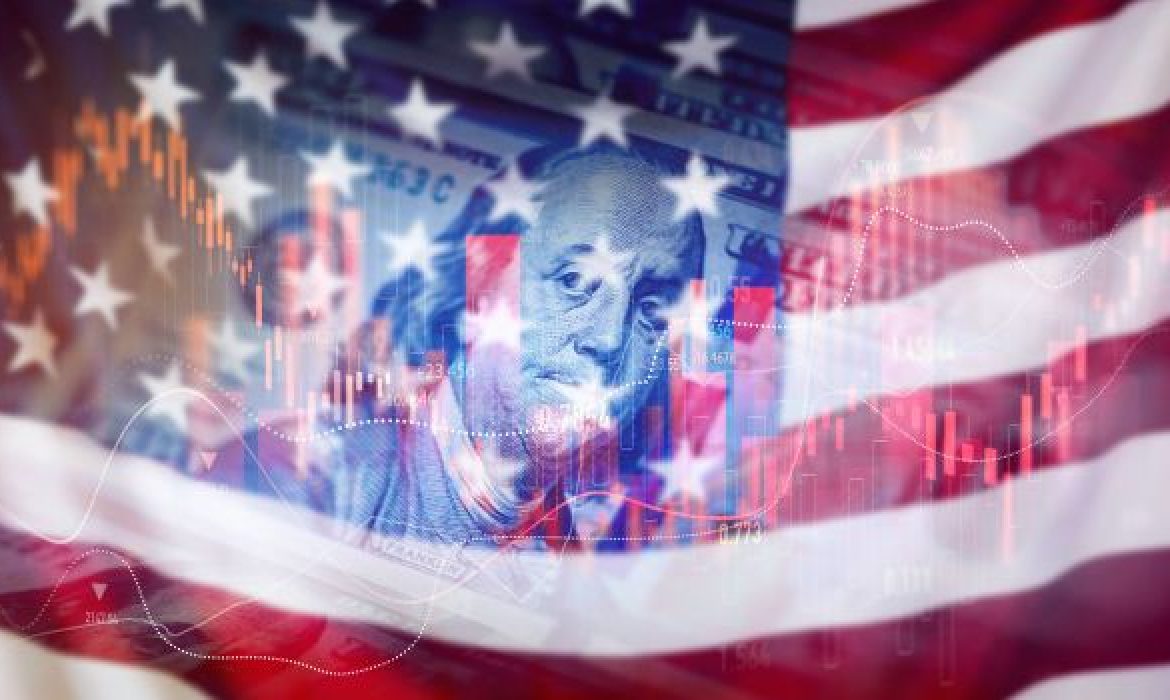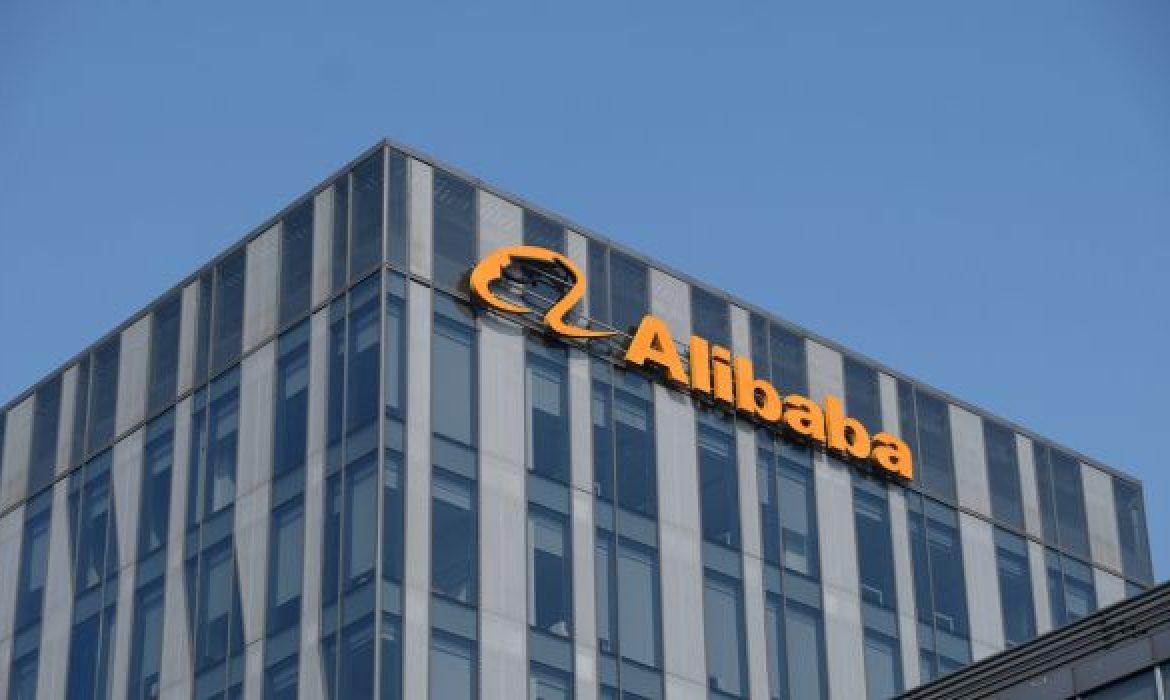Daily Synopsis of the New York market close – September 18, 2025
Date Issued – 18th September 2025
Courtesy of the Research Department at Balfour Capital Group
Key Points
- Fed Cuts Rates: The Federal Reserve lowered its benchmark rate by 25 bps to 4.00–4.25% and signaled two more cuts this year as job growth slows and inflation remains elevated.
- Novo’s Wegovy Pill: Novo Nordisk’s oral obesity drug showed 16.6% weight loss in late-stage trials, matching its injection and intensifying competition with Eli Lilly.
- Meta Smart Glasses: Mark Zuckerberg unveiled $799 Meta Ray-Ban Display glasses, integrating a neural wristband and digital display, expanding Meta’s consumer AI hardware push.
- Spirit Airlines Cuts: Spirit will slash November capacity by 25% and warned of more job cuts as it restructures under its second bankruptcy in a year.
- Truck Sales Signal Weakness: U.S. heavy truck sales fell 15% year-over-year in August, a potential recession signal amid broader manufacturing and freight sector weakness.
Fed Cuts Rates, Signals Further Easing Ahead
The Federal Reserve approved a quarter-point rate cut, lowering the benchmark to 4.00%–4.25%, and signaled two additional reductions are likely before year-end amid rising concerns over labor market weakness.
The 11–1 vote showed less dissent than expected, with only newly appointed Governor Stephen Miran pushing for a deeper cut.
Chair Jerome Powell described the move as “risk management,” stressing downside risks to employment even as inflation remains elevated.
Markets were volatile, with equities and Treasuries mixed, while the Fed’s updated dot plot confirmed a dovish tilt, projecting a slower path of tightening toward a long-run neutral rate near 3%.
Novo Nordisk’s Oral Wegovy Shows Strong Trial Results
Novo Nordisk reported late-stage trial results showing its once-daily “Wegovy pill” achieved an average 16.6% weight reduction over 64 weeks, matching the efficacy and tolerability of its injectable version.
The development positions Novo to potentially launch the first approved oral GLP-1 obesity drug, expanding accessibility for patients reluctant to use injections.
Rival Eli Lilly is also advancing its pill, Orforglipron, which showed 12.4% weight loss in trials and may gain fast-track FDA approval. Novo’s drug is under FDA review, with a decision expected in Q4, underscoring intensifying competition in the fast-growing obesity and diabetes treatment market.
Meta Launches $799 Ray-Ban Display Smart Glasses
Meta CEO Mark Zuckerberg unveiled the $799 Ray-Ban Display glasses, the company’s first consumer-ready smart glasses with an integrated digital display controlled through a neural wristband.
The launch, part of Meta’s push into wearable AI and augmented reality, follows years of collaboration with EssilorLuxottica. Alongside the flagship model, Meta introduced $499 Oakley Meta Vanguard sports glasses and a $379 Ray-Ban Meta Gen 2, offering improved battery life and camera quality.
The rollout underscores Meta’s strategy to expand its hardware ecosystem as competition intensifies in the race to merge AI, augmented reality, and consumer electronics.
Spirit Airlines to Cut Flights, Warns of More Job Reductions
Spirit Airlines will reduce capacity by 25% in November as part of a cost-cutting push following its second bankruptcy filing in less than a year.
CEO Dave Davis told employees the airline will scale back operations to focus on stronger markets while warning that further job cuts or furloughs are likely as it negotiates with vendors and evaluates its fleet.
The discount carrier, already struggling with higher costs and weak demand, faces mounting pressure after a failed JetBlue merger, with losses of nearly $257 million reported since emerging from bankruptcy in March.
Heavy Truck Sales Slump Raises Recession Concerns
U.S. heavy truck sales dropped more than 15% in August from a year earlier, hitting their lowest levels in four years and falling 21% compared with August 2023, according to the Bureau of Economic Analysis.
The downturn, seen as a leading indicator of industrial activity, has historically preceded recessions, with sharp declines evident during the dot-com bust and global financial crisis.
While some analysts argue the weakness reflects structural shifts toward services and digital sectors, the steep decline signals broader strain in manufacturing and freight demand, adding to recession concerns as policymakers weigh economic risks.
Conclusion
The Federal Reserve’s latest rate cut underscores rising concern over labor market weakness, while Novo Nordisk and Meta highlight the pace of innovation in health and technology.
At the same time, the restructuring at Spirit Airlines and the decline in U.S. heavy truck sales serve as reminders of fragility in transport and manufacturing.
Global markets remain at a crossroads as monetary policy, corporate innovation, and sector-specific signals shape investor sentiment. These developments illustrate both opportunity and caution—investors must weigh growth potential in transformative industries against signals of stress in traditional economic drivers.
Investment Insights
- Fed Policy Path: The Fed’s move toward multiple rate cuts strengthens the case for bonds and rate-sensitive equities, but persistent inflation risks warrant selective positioning.
- Healthcare Innovation: Novo Nordisk’s oral Wegovy pill highlights the expanding obesity drug market, with competition likely to intensify — an area for long-term growth investors.
- Tech Disruption: Meta’s $799 smart glasses mark another step in wearable AI integration, reinforcing opportunities in semiconductors, AR/VR, and consumer tech ecosystems.
- Transportation Stress: Spirit’s restructuring and collapsing U.S. heavy truck sales signal weakness in travel and industrial sectors, suggesting defensive positioning remains prudent.
Economic Calendar
| Date | Event | Why It Matters |
|---|---|---|
| Sep 24, 2025 | U.S. New Home Sales (Aug) | Gauge of housing demand; sensitive to mortgage rates and consumer confidence. |
| Sep 24, 2025 | Speech: San Francisco Fed President Mary Daly | Fed communication can shift rate expectations and market pricing. |
Disclaimer: This newsletter provides financial insights for informational purposes only. It does not constitute financial advice or recommendations for investment decisions.
Daily Synopsis of the New York market close – September 17, 2025
Date Issued – 17th September 2025
Courtesy of the Research Department at Balfour Capital Group
Key Points
- TikTok Framework Deal: ByteDance’s TikTok is set for a new structure with fresh investors, while Oracle retains its cloud partnership; deal expected to close within 45 days.
- GSK’s $30B U.S. Pledge: Britain’s GSK announced a $30 billion investment in U.S. R&D and manufacturing, reinforcing pharma’s pivot toward American operations under Trump’s pressure.
- Tech Giants Boost U.K. AI: Microsoft, Nvidia, Google, OpenAI and others unveiled more than $40 billion in AI commitments to the U.K., marking a major deepening of transatlantic tech ties.
- Semiannual Reporting Proposal: Treasury Secretary Bessent backed Trump’s plan to scrap quarterly earnings reports, suggesting it would cut costs and attract more foreign listings to U.S. markets.
TikTok Nears Framework Deal with ByteDance and Oracle
TikTok’s long-debated U.S. future is moving toward resolution, with sources indicating a framework deal involving new and existing ByteDance investors could be finalized within 30 to 45 days. Oracle will retain its cloud-hosting agreement under the arrangement, preserving its role in the platform’s U.S. operations. While the deal’s capitalization details remain unclear, it is expected to be modest and not structured for a public listing. The agreement follows heightened political scrutiny after Congress passed a 2024 bill mandating ByteDance divestiture, with President Trump repeatedly extending deadlines amid broader U.S.-China trade tensions.GSK Commits $30 Billion to U.S. Expansion
GlaxoSmithKline announced a $30 billion U.S. investment plan over the next five years, aligning with President Trump’s state visit to the U.K. The commitment includes $1.2 billion for advanced manufacturing, AI integration, and digital technologies, with a new biologics factory slated for Pennsylvania and upgrades to existing facilities across multiple states. The move reinforces the pharmaceutical sector’s pivot toward U.S.-based R&D and production, as global drugmakers face pressure from Washington to strengthen domestic supply chains and curb drug costs. GSK joins AstraZeneca, Novartis, Sanofi, Roche, and Eli Lilly in accelerating U.S. investments under Trump-era policy incentives.Tech Giants Commit $40 Billion+ to U.K. AI Push
Microsoft, Nvidia, Google, OpenAI and Salesforce unveiled more than $40 billion in fresh AI investments in the U.K., timed with President Trump’s state visit. Microsoft will lead with $30 billion by 2028, including building the nation’s largest supercomputer with 23,000 GPUs, while Nvidia pledged £11 billion to deploy 120,000 Blackwell chips — its largest-ever European rollout. Google announced a £5 billion data center project, OpenAI launched “Stargate U.K.,” and Salesforce lifted its U.K. commitment to $6 billion. The surge underscores strengthened transatlantic ties and positions Britain as a rising hub for AI infrastructure and innovation.Bessent Backs Trump’s Call to Scrap Quarterly Reporting
U.S. Treasury Secretary Scott Bessent endorsed President Trump’s proposal to replace quarterly earnings reports with semiannual filings, arguing the shift would cut compliance costs and give executives greater freedom to focus on long-term strategy. Trump said the move would align the U.S. with Europe and the U.K., where semiannual reporting is common, and could make U.S. markets more attractive for foreign listings. While advocates see reduced short-termism and potential boosts to IPO activity, investor groups caution that less frequent reporting could weaken transparency and oversight in corporate governance.Conclusion
From TikTok’s restructuring and Oracle’s sustained role to GSK’s record U.S. commitment and the surge of AI investments in the U.K., the transatlantic economic corridor is deepening in both technology and healthcare. Meanwhile, proposals to reduce corporate reporting frequency highlight a potential regulatory shift with implications for transparency and global capital flows. This week’s developments underscore a pivotal moment for global markets, shaped by shifting policy frameworks, strategic corporate investments, and evolving governance debates. Together, these events reflect both opportunity and uncertainty, demanding that investors remain agile, forward-looking, and prepared to navigate rapidly changing dynamics.Investment Insights
- Tech & AI Expansion: Microsoft, Nvidia, and OpenAI’s multi-billion U.K. commitments highlight AI infrastructure as a core driver of long-term growth, reinforcing Europe’s rising role in the sector.
- Healthcare Shift: GSK’s $30 billion U.S. investment reflects a broader trend of pharma capital realignment toward the U.S., where regulatory and pricing leverage remain central.
- Policy & Regulation: Trump’s proposal to scrap quarterly reporting could ease compliance costs and attract foreign listings, but may increase transparency risks for investors.
- Geopolitical & Trade: TikTok’s restructuring underscores how U.S.-China tech tensions continue to shape global capital allocation and regulatory frameworks.
Economic Calendar
| Date | Event | Why It Matters |
|---|---|---|
| Sept 17, 2025 | U.S. Federal Reserve FOMC Meeting | Expected first rate cut of 2025; guidance and dot-plot will shape the path of future cuts. |
| Sept 18, 2025 | Bank of England Interest Rate Decision | Signals the U.K.’s stance on inflation and growth; implications for gilts and GBP. |
| Sept 19, 2025 | Eurozone CPI Release | Key read on inflation momentum ahead of ECB decisions; impacts EUR rates curve. |
| Sept 20, 2025 | U.S. Retail Sales & Industrial Production | High-impact gauges of demand and output that inform growth and inflation outlook. |
Disclaimer: This newsletter provides financial insights for informational purposes only. It does not constitute financial advice or recommendations for investment decisions.
Daily Synopsis of the New York market close – September 16, 2025
Date Issued – 16th September 2025
Courtesy of the Research Department at Balfour Capital Group
Key Points
- Fed Rate Cut Looms: The Federal Reserve is expected to deliver its first rate cut of 2025 this week, with markets debating whether a series of cuts will follow amid weak labor data and sticky inflation.
- Nikkei Breaches 45,000: Japan’s Nikkei 225 surged past 45,000 for the first time, buoyed by optimism around U.S.-China trade talks and a framework deal on TikTok’s divestment.
- Pharma Pressures UK: Global drugmakers including Merck, AstraZeneca, and Eli Lilly pulled back investments in Britain, increasing pressure on London ahead of Trump’s looming drug pricing order.
- OpenAI Escalates Rivalry: OpenAI hired xAI’s former CFO Mike Liberatore to oversee compute spending, intensifying its rivalry with Elon Musk as the firm ramps up AI infrastructure investment.
Fed Prepares First 2025 Rate Cut Amid Policy Uncertainty
The Federal Reserve is expected to deliver its first rate cut of 2025 this week, likely by 25 basis points, as it attempts to balance a weakening labor market with stubbornly high inflation.
Markets are now focused on the Fed’s updated “dot plot,” which could reveal whether policymakers lean toward a limited easing cycle or a more aggressive path.
While former Fed officials caution against expecting multiple cuts, traders are pricing in a series of reductions through early 2026.
The decision comes amid political pressure from President Trump and signs of labor market softening, raising uncertainty over the Fed’s longer-term trajectory.
Nikkei Tops 45,000 as U.S.-China Trade Talks Progress
Japan’s Nikkei 225 briefly surpassed the 45,000 level for the first time before closing at 44,902.27, supported by optimism over U.S.-China trade talks in Madrid and a framework deal on TikTok’s divestment.
Gains were echoed in South Korea, where the Kospi rose 1.24% to a fresh record after the government scrapped a planned capital gains tax hike, with consumer and auto stocks leading advances.
Broader Asia-Pacific markets were mixed, with Hong Kong and mainland Chinese equities slipping, while Australia’s ASX posted modest gains.
U.S. equities also advanced ahead of the Federal Reserve’s key policy decision later this week.
Pharma Firms Pressure U.K. Ahead of Trump’s Drug Pricing Deadline
Global pharmaceutical companies are intensifying pressure on the U.K. as President Trump’s Sept. 29 deadline for drug pricing concessions looms, with AstraZeneca, Merck, and Eli Lilly pausing or scrapping billions in planned investments.
The firms argue that Britain’s undervaluation of medicines and lack of competitiveness have weakened its life sciences sector, even as Washington demands binding commitments to lower U.S. drug prices.
Analysts suggest the withdrawals may be a negotiating tactic, but warn that capital is increasingly shifting toward the U.S., leaving the U.K. vulnerable unless it improves its investment environment and industry support.
OpenAI Hires Former xAI CFO Amid Intensifying Rivalry
OpenAI has appointed Mike Liberatore, former CFO of Elon Musk’s xAI, as its new business finance officer to manage soaring infrastructure costs, including a $300 billion Oracle compute deal. Liberatore, who previously arranged $10 billion in financing at xAI, will report to CFO Sarah Friar and work closely with Greg Brockman’s team.
The move underscores escalating tensions between OpenAI CEO Sam Altman and Musk, who are locked in a legal dispute as their companies compete for dominance in artificial intelligence.
OpenAI’s latest hire signals its determination to scale aggressively, backed by Microsoft and a $500 billion valuation.
Conclusion
Global markets enter the week with heightened anticipation as the Federal Reserve prepares for its first 2025 rate cut, a move that could set the tone for monetary policy into next year.
Equity markets remain buoyed by optimism over U.S.-China trade progress and record highs in Japan’s Nikkei, while sector-specific risks emerge with pharmaceutical firms pressuring the U.K. over drug pricing and escalating strategic shifts in AI leadership.
Investors face a critical juncture where policy shifts, geopolitical negotiations, and corporate positioning intersect—reinforcing the importance of agility and diversification in navigating both risks and opportunities across global markets.
Investment Insights
- Fed Policy Path: The first rate cut of 2025 is likely just the beginning; markets should prepare for potential sequential easing if labor market weakness persists, supporting equities but compressing bond yields.
- Asia Equities Strength: Record highs in Japan’s Nikkei and South Korea’s Kospi reflect optimism from trade progress and policy support—suggesting sustained momentum in Asian equities.
- Pharma Sector Risks: U.S. drug pricing reforms and stalled U.K. investments highlight regulatory and geopolitical risks that could reshape capital allocation in global healthcare.
- AI Rivalry Dynamics: OpenAI’s strategic hires and Musk’s xAI push underscore the accelerating AI arms race, with capital intensity creating both opportunity and volatility across tech supply chains.
Economic Calendar
| Date | Event | Why It Matters |
|---|---|---|
| Sept 16–17, 2025 | U.S. Federal Reserve FOMC Meeting | The Fed is expected to cut interest rates (first cut of 2025), with markets focused on the dot-plot and forward guidance. |
| Sept 17, 2025 | U.S. Retail Sales & Industrial Production | Key indicators of demand and production strength just after the Fed meeting; impact on inflation expectations. |
| Sept 19, 2025 | Eurozone Inflation Report | Critical for assessing ECB’s next moves on monetary policy and the euro’s direction. |
| Sept 20, 2025 | Bank of England Policy Meeting | Investors watch whether the BoE follows the Fed’s lead with rate adjustments amid slowing growth. |
Disclaimer: This newsletter provides financial insights for informational purposes only. It does not constitute financial advice or recommendations for investment decisions.
Daily Synopsis of the Asia market close – September 15, 2025
Date Issued – 15th September 2025
Courtesy of the Research Department at Balfour Capital Group
Key Points
- Kospi Hits Record High: South Korea’s Kospi reached 3,420 after the government scrapped plans to raise stock investment taxes, marking its 10th consecutive session of gains.
- U.S.-U.K. Nuclear Pact: Washington and London are set to sign multi-billion-pound nuclear power deals, including 12 modular reactors, in a bid to fuel data centers and drive a “nuclear renaissance.”
- Fed Decision in Focus: U.S. futures traded mixed as investors await a widely expected Fed rate cut, while U.S.-China talks in Madrid continued with little progress on trade and tech disputes.
- France Credit Downgrade: Fitch cut France’s rating to A+ from AA-, citing political fragmentation and rising debt, pushing bond yields higher and fueling concerns over fiscal stability.
Kospi Hits Record as Tax-Hike Plan Scrapped
South Korea’s Kospi index climbed to a record 3,420.23 on Monday before settling 0.35% higher at 3,407.31, its tenth consecutive gain, after the government scrapped plans to raise taxes on stock investments, bolstering investor sentiment.
The Kosdaq also advanced, while broader Asia-Pacific markets traded mixed amid U.S.-China talks in Madrid and anticipation of Chinese economic data, which later showed weaker retail sales and worsening property sector contraction.
Hong Kong’s Hang Seng edged up 0.23% and the CSI 300 gained 0.24%, while Australia’s ASX slipped 0.13%. U.S. futures were steady, with investors focused on this week’s Fed meeting and potential rate cuts.
U.S.-U.K. Nuclear Pact Targets “Golden Age” of Energy
The U.S. and U.K. are set to sign sweeping nuclear power agreements during President Trump’s state visit, launching the Atlantic Partnership for Advanced Nuclear Energy. Plans include constructing up to 12 modular reactors in Hartlepool and developing SMR-powered data centers in Nottinghamshire, with projects estimated to deliver over £50 billion in economic value and thousands of jobs.
U.K. Prime Minister Keir Starmer hailed the deal as positioning both nations at the forefront of energy innovation, as nuclear power gains traction as a low-carbon solution to meet surging demand from AI-driven data centers and industrial growth.
Futures Mixed as Fed Decision and U.S.-China Talks Dominate
U.S. equity futures traded unevenly Monday, with S&P 500 and Nasdaq contracts modestly higher while Dow futures slipped, as investors braced for a pivotal Federal Reserve policy meeting. Markets are pricing in at least a 25-basis-point rate cut on Wednesday, reflecting signs of labor market weakness and sticky inflation pressures.
Meanwhile, U.S. and Chinese officials resumed talks in Madrid, with expectations centered on a potential extension of the deadline for ByteDance to divest TikTok’s U.S. arm.
Oil prices edged higher as Ukrainian drone strikes on Russian energy facilities fueled supply concerns, reinforcing volatility in commodity markets.
France’s Borrowing Costs Rise After Fitch Downgrade
French government bond yields briefly spiked Monday after Fitch cut the nation’s credit rating to A+ from AA-, citing rising debt and persistent political fragmentation. The 10-year yield climbed 7 basis points to 3.51% before easing, while 30-year OATs touched 4.34%.
The downgrade follows last week’s collapse of Prime Minister Francois Bayrou’s government, with newly appointed PM Sebastien Lecornu facing resistance to €44 billion in proposed budget cuts. Fitch warned France’s debt could reach 121% of GDP by 2027, far above eurozone peers, underscoring investor concerns about fiscal sustainability amid ongoing political turmoil.
Conclusion
South Korea’s Kospi surge reflects investor optimism on domestic reforms, while the U.S.-U.K. nuclear pact underscores the role of strategic energy investment in powering future industries.
In the U.S., traders remain focused on the Fed’s upcoming rate decision as labor market weakness contrasts with persistent inflation.
Meanwhile, France’s downgrade highlights the risks of political fragmentation for fiscal stability.
Global markets are navigating a pivotal week defined by central bank decisions, geopolitical negotiations, and shifting credit dynamics. These developments signal both opportunity and caution, reminding investors to balance near-term momentum with structural vulnerabilities in global markets.
Investment Insights
- South Korea Rally: The Kospi’s record high following scrapped tax hikes signals how policy reversals can quickly reprice equities; investors should watch for similar pro-market moves in Asia.
- U.S.-U.K. Nuclear Pact: Massive investment in modular reactors highlights nuclear energy’s growing role in powering data centers and AI infrastructure, creating long-term opportunities across energy and tech supply chains.
- Fed Watch: With a rate cut expected despite sticky inflation, bond and equity markets may diverge; positioning in quality growth stocks and rate-sensitive assets could benefit from easing.
- France Downgrade: Rising sovereign risk in Europe underlines the importance of monitoring political stability as a driver of bond spreads and eurozone market sentiment.
Economic Calendar
| Date | Event | Why It Matters |
|---|---|---|
| Sept 17, 2025 | U.S. Federal Reserve FOMC Policy Meeting | Markets expect the first rate cut; Fed guidance and projections will be closely scrutinized. |
| Sept 19, 2025 | U.K. Interest Rate Decision | Signals Bank of England’s stance on inflation, growth, and currency stability. |
| Sept 20, 2025 | Eurozone CPI Report | Key indicator for inflation pressures in Europe ahead of ECB decisions. |
Disclaimer: This newsletter provides financial insights for informational purposes only. It does not constitute financial advice or recommendations for investment decisions.
Daily Synopsis of the New York market close – September 12, 2025
Date Issued – 12th September 2025
Courtesy of the Research Department at Balfour Capital Group
Key Points
- SK Hynix Breakthrough: Shares jumped 7% to 25-year highs after unveiling HBM4, fueling optimism for AI-driven semiconductor demand.
- Wall Street Records: Dow closed above 46,000 for the first time as rate-cut bets outweighed hotter CPI, though futures steadied afterward.
- Yields Rebound: U.S. Treasury yields edged higher, with the 10-year near 4.04%, as markets weighed strong inflation against rising jobless claims.
- Europe’s Tech Revival: Klarna’s IPO and ASML’s AI funding push reignited optimism for Europe’s ability to scale competitive tech champions.
SK Hynix Leads Tech-Driven Asia Rally Amid Fed Cut Optimism
Asian equities advanced Friday, with SK Hynix surging more than 7% to a 25-year high after unveiling its HBM4 chip, seen as critical for next-generation AI applications. The gains came alongside strength in Alibaba and Baidu, which rose over 6% and 10% in Hong Kong as they deployed in-house semiconductors to reduce reliance on Nvidia. Japan’s Nikkei climbed 0.9% to a fresh record, while South Korea’s Kospi gained 1.5% and Australia’s ASX 200 added 0.7%. Global markets remain buoyed by easing inflation pressures and expectations of U.S. rate cuts, with Wall Street indices closing at record highs overnight.U.S. Futures Steady After Wall Street Rallies on Rate-Cut Bets
U.S. stock futures traded flat Thursday night after Wall Street closed at record highs, driven by mounting expectations of Federal Reserve rate cuts next week. The Dow surged more than 600 points to finish above 46,000 for the first time, while the S&P 500 gained 0.9% and the Nasdaq advanced 0.7%. A hotter-than-expected 0.4% monthly CPI print was offset by jobless claims rising to their highest since 2021, reinforcing the case for easing. Futures markets now fully price in a quarter-point cut at the Fed’s September 17 meeting, with analysts signaling further reductions may follow.Treasury Yields Edge Higher as Fed Balances Inflation and Jobs Data
U.S. Treasury yields inched up Friday, with the 10-year trading near 4.04%, as investors weighed conflicting signals from inflation and labor data ahead of next week’s FOMC meeting. The August CPI rose 2.9% year on year, its sharpest monthly gain since January, while core inflation held at 3.1%, both above the Fed’s 2% target. At the same time, jobless claims climbed to their highest since 2021, underscoring a softening labor market. Economists expect the Fed to deliver a 25-basis-point rate cut, though divisions within the committee highlight the tension between containing inflation and supporting employment.Klarna IPO and AI Funding Lift Europe’s Tech Ambitions
Europe’s tech sector drew fresh momentum this week as Klarna surged 15% in its long-awaited NYSE debut, valuing the fintech at over $17 billion, while Dutch chipmaker ASML led a €1.7 billion funding round for French AI firm Mistral, doubling its valuation to €11.7 billion. London-based ElevenLabs also doubled its valuation to $6.6 billion in a secondary sale. The string of deals has revived hopes that Europe can compete more effectively with U.S. and Asian tech hubs, though systemic hurdles such as fragmented regulations and limited pension-fund backing still weigh on the region’s long-term scalability.Conclusion
In Asia, SK Hynix’s HBM4 milestone reinforced AI’s role as a structural growth driver, while Japan’s Nikkei and regional peers gained on Fed rate-cut optimism. In the U.S., equities hit record highs despite mixed CPI and labor data, with Treasury yields highlighting the Fed’s policy challenge. Meanwhile, Europe’s tech ambitions received a boost through Klarna’s IPO and AI-focused funding, signaling renewed investor confidence. Global markets continue to reflect a delicate balance between monetary policy expectations, corporate breakthroughs, and macroeconomic headwinds. Together, these developments suggest cautious optimism, but investors must remain alert to inflation dynamics and policy-driven volatility.Investment Insights
- Semiconductor breakthroughs: SK Hynix’s HBM4 highlight AI’s accelerating hardware demand, favoring selective exposure to chipmakers and suppliers.
- U.S. equities’ record highs: Suggest strong momentum, but rising jobless claims and sticky inflation mean investors should brace for Fed-driven volatility.
- Treasury yields near 4%: Signal persistent tension between inflation control and labor support, reinforcing the value of duration management in fixed-income portfolios.
- Europe’s renewed tech momentum: Klarna and Mistral offer diversification potential, though scaling risks remain; selective exposure to high-growth European names could complement U.S. and Asian tech allocations.
Economic Calendar
| Date | Event | Why It Matters |
|---|---|---|
| Sept 17, 2025 | U.S. Federal Reserve FOMC Policy Meeting | Markets expect the first rate cut; Fed guidance and projections will be closely scrutinized. |
| Sept 19, 2025 | U.K. Interest Rate Decision | Signals Bank of England’s stance on inflation, growth, and currency stability. |
| Sept 20, 2025 | Eurozone CPI Report | Key indicator for inflation pressures in Europe ahead of ECB decisions. |
Disclaimer: This newsletter provides financial insights for informational purposes only. It does not constitute financial advice or recommendations for investment decisions.
Daily Synopsis of the New York market close – September 11, 2025
Date Issued – 11th September 2025
Courtesy of the Research Department at Balfour Capital Group
Key Points
- European Stocks Hold Firm as ECB and U.S. Inflation Loom: Investors await the ECB’s policy decision and U.S. CPI, with rate-cut expectations driving cautious gains across European indices.
- Nikkei Hits Record as SoftBank Surges on Oracle-OpenAI Deal Buzz: Japan’s Nikkei reached an all-time high, boosted by a 10% jump in SoftBank tied to Oracle’s blockbuster AI cloud deal.
- Oracle’s $244B Surge Powers Global Rally as Inflation Cools: Shares soared 36% after stunning growth projections, lifting global equities as easing U.S. wholesale prices reinforced Fed cut bets.
- Copper Holds Above $10,000 on Supply Disruptions and China Demand Hopes: Supply risks from Indonesia’s Grasberg mine and signs of stabilizing Chinese demand supported copper at elevated levels.
European Stocks Hold Firm as ECB and U.S. Inflation Loom
European equities edged higher Thursday, with the DAX up 0.1% and France’s CAC 40 gaining 0.3%, as investors awaited the European Central Bank’s policy decision and U.S. inflation data. The ECB is expected to hold rates at 2% but keep easing options open amid tariff risks, subdued growth, and French political turmoil, with inflation forecast to dip below target next year.
Attention also turned to U.S. CPI, projected at 2.9%, which could influence whether the Fed cuts by 25 or 50 basis points next week. Oil prices slipped as U.S. inventory builds stoked demand concerns despite ongoing geopolitical tensions.
Nikkei Hits Record as SoftBank Surges on Oracle-OpenAI Deal Buzz
Japan’s Nikkei 225 climbed 1.2% to a record 44,372.5 Thursday, lifted by SoftBank’s 10% rally amid reports of a $300 billion OpenAI-Oracle cloud deal linked to the U.S. Stargate initiative.
Gains in energy and utilities stocks further supported the index, while the Topix rose 0.2%. South Korea’s Kospi also hit a record close, up 0.9%, as regional markets tracked Wall Street’s record highs on cooling U.S. inflation and Fed rate-cut optimism.
China’s CSI 300 jumped 2.3%, while Australia’s ASX slipped and Hong Kong’s Hang Seng eased slightly. U.S. futures were steady ahead of August CPI data.
Oracle’s $244B Surge Powers Global Rally as Inflation Cools
Oracle shares skyrocketed 36% Wednesday, adding $244 billion to its market value in the company’s best trading day since 1992, after issuing growth projections that stunned analysts and lifted chairman Larry Ellison’s fortune by over $100 billion. Klarna’s IPO debut also impressed, with shares up 15%.
The bullish tech momentum helped drive the S&P 500 and Nasdaq to fresh record highs, bolstered by U.S. wholesale prices unexpectedly falling in August, easing inflation concerns and reinforcing Fed rate-cut bets. Global equities tracked the surge, with Japan’s Nikkei hitting a record as sentiment turned decisively risk-on across markets.
Copper Holds Above $10,000 on Supply Disruptions and China Demand Hopes
Copper prices stayed elevated above $10,000 per metric ton on the London Metal Exchange as investors weighed supply risks in Indonesia and signs of stabilizing demand from China. Freeport’s Grasberg mine, one of the world’s largest sources of copper, was forced to suspend operations while rescuers freed trapped workers, adding to near-term supply concerns.
At the same time, Chinese producer price deflation eased for the first time in six months, fueling expectations of firmer industrial activity ahead. The combination of constrained supply and improving demand outlook is reinforcing copper’s role as a key barometer of global growth momentum.
Conclusion
European equities are steady as investors await ECB guidance and U.S. inflation data that will steer central bank moves. In Asia, Japan’s Nikkei surged to record highs, with SoftBank riding optimism around Oracle’s AI-driven momentum.
Oracle’s staggering $244 billion market-cap increase underscored the market’s enthusiasm for transformative tech growth, lifting global equities further.
Meanwhile, copper’s resilience above $10,000 highlights both supply vulnerabilities and tentative signs of Chinese demand recovery.
Global markets are being shaped by a confluence of monetary policy expectations, corporate breakthroughs, and commodity dynamics. Together, these developments reinforce a cautiously optimistic tone across global markets.
Investment Insights
- ECB caution and U.S. CPI data will be pivotal for rate expectations: Investors should prepare for volatility around central bank signaling.
- Japan’s equity rally signals opportunity in tech-linked names: Though political and currency risks warrant selective positioning.
- Oracle’s explosive growth outlook reinforces AI-driven infrastructure as a core investment theme: Benefiting both software leaders and semiconductor suppliers.
- Copper’s resilience underscores the importance of commodities as growth barometers: Supply disruptions and China’s industrial demand recovery could support further upside for base metals.
Economic Calendar
| Date | Event | Why It Matters |
|---|---|---|
| Sept 11, 2025 | European Central Bank Governing Council Meeting | ECB decision expected; markets will look for guidance on rate outlook amid inflation pressures and political risks. |
| Sept 14, 2025 | Bank of England Rate Decision | Signals how the UK central bank plans to address inflation and economic headwinds. |
| Sept 17, 2025 | Federal Reserve FOMC Meeting | Fed decision could reset expectations for rate cuts amid mixed inflation and labor market signals. |
| Sept 17, 2025 | Bank of Canada Interest Rate Decision | May reveal how North American central banks are responding to global inflation and slowing growth. |
Disclaimer: This newsletter provides financial insights for informational purposes only. It does not constitute financial advice or recommendations for investment decisions.
Daily Synopsis of the New York market close – September 10, 2025
Date Issued – 10th September 2025
Courtesy of the Research Department at Balfour Capital Group
Key Points
- Asia Stocks Rally on Fed Cut Bets as South Korea Hits Record High: Regional equities advanced with new highs in Japan, South Korea, and Singapore, while China’s deflation underscored weak domestic demand.
- European Stocks Gain as Inflation Data and Oil Risks Dominate Focus: Markets rose ahead of U.S. inflation prints, with investors weighing the scale of Fed cuts, Middle East tensions lifting oil, and Fitch set to review France’s rating.
- Retail Access to Private Markets Expands, but Risks Loom Large: New U.K. funds signal momentum in democratizing private assets, though liquidity constraints, fees, and opacity raise investor risk concerns.
- Oracle Soars on Massive Cloud Backlog Despite Earnings Miss: Shares spiked 29% on $455B in booked cloud revenue, with analysts calling the surge transformative for OCI’s AI-driven growth trajectory.
Asia Stocks Rally on Fed Cut Bets as South Korea Hits Record High
Asian equities advanced Wednesday, mirroring Wall Street’s gains, as investors priced in higher odds of a Federal Reserve rate cut. South Korea’s Kospi rose 1.7% to a record high, Japan’s Nikkei gained 0.9% to an all-time peak, and Singapore’s Straits Times also set a new record. China’s CSI 300 edged higher despite consumer prices falling 0.4% year-on-year, a deeper decline than expected, while producer prices remained in deflation.
Tech shares gained across the region, supported by Apple’s supply chain, though Apple’s own stock slipped after its product launch. U.S. futures were modestly higher ahead of key inflation data.
European Stocks Gain as Inflation Data and Oil Risks Dominate Focus
European equities advanced Wednesday, with the DAX up 0.5% and the CAC 40 rising 0.4%, tracking Wall Street’s record-setting session as investors awaited U.S. inflation readings that could shape the Fed’s September rate decision. Markets are weighing whether incoming data will justify a standard 25-basis-point cut or a larger move.
China’s deflationary data underscored weak global demand, while in Europe, Macron appointed Sebastien Lecornu as prime minister to steer budget negotiations ahead of Fitch’s rating review.
Corporate updates included Inditex’s softer sales, Novo Nordisk’s 9,000 job cuts, and Oracle’s bullish cloud outlook. Brent crude climbed 1% on Middle East tensions and Russian supply concerns.
Retail Access to Private Markets Expands, but Risks Loom Large
European efforts to broaden retail access to private markets gained traction this week with Hargreaves Lansdown and Schroders Capital launching new long-term asset funds offering exposure to private equity, credit, and infrastructure. Supporters highlight diversification and long-term growth benefits, while regulators argue these vehicles could help channel capital toward decarbonization and industrial revival.
Yet concerns persist over liquidity, transparency, and complex fee structures, particularly in volatile markets. The rise of semi-liquid “evergreen” funds underscores demand for flexible alternatives, but analysts warn that retail investors face heightened risks if illiquidity premia compress or credit conditions worsen.
Oracle Soars on Massive Cloud Backlog Despite Earnings Miss
Oracle shares surged 29% in premarket trading after the company unveiled a record $455 billion in booked cloud revenue, far surpassing expectations and offsetting weaker-than-forecast fiscal Q1 earnings. The backlog, boosted by $317 billion of new deals in the quarter, positions Oracle as a major growth story in enterprise cloud, with management forecasting half-a-trillion in Oracle Cloud Infrastructure orders and multibillion-dollar contracts still to come.
Analysts highlighted the acceleration as transformative, projecting OCI revenue to grow 77% this year and quadruple by 2029, a trajectory that underscores robust AI-driven demand and spillover benefits for hardware partners like Nvidia.
Conclusion
Markets continue to reflect a delicate balance between optimism fueled by policy expectations and innovation, and caution over structural risks.
Asia’s rally highlighted investor confidence in Fed rate cuts, though China’s persistent deflation signals lingering headwinds.
In Europe, equities gained but face looming tests from inflation data, sovereign ratings, and geopolitical risks that are driving oil higher. Expanding retail access to private markets underscores a broader trend toward democratization of alternative assets, though liquidity and transparency concerns remain.
Meanwhile, Oracle’s cloud backlog positions it as a standout AI-driven growth story, reinforcing the transformative role of technology in global markets.
Investment Insights
- Asian equity momentum highlights opportunities in Japan, South Korea, and Singapore, but China’s deflationary trend warrants caution in mainland exposure.
- Upcoming U.S. inflation data is pivotal for rate expectations; a hotter print could disrupt Fed cut bets and weigh on equities and bonds.
- Retail access to private markets offers diversification potential but poses liquidity and transparency risks—allocations should remain limited within broader portfolios.
- Oracle’s blockbuster cloud backlog reinforces AI infrastructure as a high-conviction theme, with beneficiaries extending beyond software to semiconductor suppliers and data center ecosystem partners.
Economic Calendar
| Date | Event | Why It Matters |
|---|---|---|
| Wed, Sept 10 | Producer Price Index (PPI) | Wholesale inflation gauge; signals pressure on consumer prices and Fed policy direction. |
| Thu, Sept 11 | Consumer Price Index (CPI) | Core inflation widely watched; key to calibrating Fed’s rate-cut expectations. |
| Fri, Sept 12 | University of Michigan Consumer Sentiment (Prelim) | Early glimpse into household confidence, influencing spending outlook. |
| Next Week | Federal Reserve Rate Decision | Markets expect the Fed to begin cutting rates, guided by this week’s inflation data. |
Disclaimer: This newsletter provides financial insights for informational purposes only. It does not constitute financial advice or recommendations for investment decisions.
Daily Synopsis of the New York market close – September 9, 2025
Date Issued – 9th September 2025
Courtesy of the Research Department at Balfour Capital Group
Key Points
- Asia Markets Mixed as Japan Pullback Offsets Tech-Led Optimism: The Nikkei retreated after a record high on political uncertainty, while South Korea and Hong Kong gained on Wall Street’s tech rally.
- Futures Steady as Investors Await Key Inflation Data: U.S. stock futures held flat after the Nasdaq’s record close, with traders focused on upcoming PPI and CPI reports that could guide the Fed’s next move.
- Nasdaq Tightens Oversight on Crypto Treasuries With Shareholder Vote Rule: The exchange imposed shareholder approval for equity raises funding crypto buys, slowing a $132 billion treasury rush.
- Broadcom Soars on $10B AI Chip Deal, Boosting Custom Silicon Momentum: Shares jumped 15% on a major order, likely from OpenAI, cementing Broadcom’s role as a leading AI chip supplier and pressuring Nvidia and AMD.
Asia Markets Mixed as Japan Pullback Offsets Tech-Led Optimism
Asia-Pacific equities traded mixed Tuesday, with Japan’s Nikkei 225 retreating 0.3% after touching a record high earlier in the session, pressured by political uncertainty following Prime Minister Shigeru Ishiba’s resignation. While analysts expect the next LDP leader to pursue fiscal stimulus, near-term volatility weighed on sentiment. The yen firmed slightly against the dollar.
Elsewhere, South Korea’s Kospi rose nearly 1%, Hong Kong’s Hang Seng added 0.6%, and India’s benchmarks gained modestly, while Australia and China slipped.
Indonesia’s market fell sharply after the finance minister’s dismissal, sending the rupiah lower. Wall Street’s overnight tech rally, led by Broadcom and Nvidia, provided some regional support.
Futures Steady as Investors Await Key Inflation Data
U.S. stock futures were little changed Monday night after the Nasdaq closed at a record high, buoyed by gains in Broadcom and Nvidia. Dow futures rose 0.1%, while S&P 500 and Nasdaq 100 contracts edged higher by a similar margin. Investor focus now shifts to this week’s inflation readings, with PPI due Wednesday and CPI Thursday, which could influence the Fed’s September rate decision after last week’s weak jobs report boosted rate-cut bets.
Corporate news added stock-specific moves, with Fox shares slipping 3% on governance shifts and Dell down 2% after its CFO’s resignation, while Apple, Oracle, and GameStop await catalysts.
Nasdaq Tightens Oversight on Crypto Treasuries With Shareholder Vote Rule
Nasdaq has moved to require shareholder approval for stock issuances used to fund corporate crypto purchases, slowing a wave of treasury strategies that has seen over 180 companies plan $132 billion in token acquisitions. The rule adds procedural hurdles under existing listing standards, targeting equity raises and convertibles intended for balance-sheet crypto buys.
Shares of crypto-treasury firms initially fell on the news before recovering, while appetite for token-linked exposure remains evident, highlighted by American Bitcoin’s 16.5% debut gain. The change underscores rising regulatory scrutiny as the SEC and U.S. lawmakers advance broader digital asset frameworks.
Broadcom Soars on $10B AI Chip Deal, Boosting Custom Silicon Momentum
Broadcom shares surged 15% Friday after unveiling a $10 billion AI chip order from a new customer, widely speculated to be OpenAI, reinforcing its role as a key alternative to Nvidia in the generative AI arms race. The deal positions Broadcom to lift AI-related revenue above $40 billion by fiscal 2026, far exceeding prior forecasts, and underscores Big Tech’s shift toward custom semiconductors amid supply constraints and cost pressures.
Nvidia and AMD shares slipped on the news, while Broadcom’s market value stands to expand by more than $200 billion if gains hold, supported by CEO Hock Tan’s renewed leadership commitment.
Conclusion
Global markets continue to balance optimism from technological innovation with caution over policy and regulatory developments.
Asian equities reflected mixed sentiment as Japan’s political uncertainty offset broader tech-led gains, while U.S. investors turned their focus to upcoming inflation data that could shape the Fed’s next rate decision.
Nasdaq’s new shareholder vote rule highlights rising scrutiny of corporate crypto strategies, tempering the recent treasury rush.
Meanwhile, Broadcom’s $10 billion AI chip deal reinforced investor conviction in the custom semiconductor space, underscoring the sector’s pivotal role in reshaping market dynamics and signaling further opportunity for growth in the AI-driven economy.
Investment Insights
- Japan’s political transition may bring volatility: Expectations of fiscal stimulus support a constructive outlook for Japanese equities.
- U.S. inflation prints this week are pivotal: Softer data would reinforce Fed rate-cut bets, while upside surprises could unsettle risk assets.
- Nasdaq’s shareholder vote rule: Raises hurdles for crypto-treasury firms, suggesting near-term pressure but longer-term regulatory clarity could aid institutional adoption.
- Broadcom’s $10B AI chip order: Signals accelerating demand for custom silicon, strengthening the investment case for suppliers tied to the AI infrastructure buildout while heightening competitive risks for Nvidia and AMD.
Economic Calendar
| Date | Event | Focus |
|---|---|---|
| Tuesday, Sept 9 | Employment Data Revisions | Revisions to recent labor figures may recalibrate views on jobs and policy. |
| Wednesday, Sept 10 | Producer Price Index (PPI) | Wholesale inflation gauge; signals upstream price pressures. |
| Thursday, Sept 11 | Consumer Price Index (CPI) | Core inflation data will be closely watched for Fed policy cues. |
| Friday, Sept 12 | Michigan Consumer Sentiment (Prelim) | Preliminary sentiment reading provides insight into consumer confidence. |
Disclaimer: This newsletter provides financial insights for informational purposes only. It does not constitute financial advice or recommendations for investment decisions.
Daily Synopsis of the Asia market close – September 8, 2025
Date Issued – 8th September 2025
Courtesy of the Research Department at Balfour Capital Group
Key Points
- Alibaba Soars on Cloud Growth and AI Ambitions: Shares jumped 19% in Hong Kong as cloud revenues surged 26% and reports of a new AI chip fueled optimism.
- China’s Export Growth Hits 6-Month Low as U.S. Shipments Collapse: Exports to the U.S. plunged 33% in August, dragging overall growth to its weakest since February.
- OPEC+ Signals Market-Share Push With Modest Output Hike: The group will raise output by 137,000 bpd in October, accelerating the rollback of cuts despite softer demand.
- European Stocks Rise as France Faces Pivotal Confidence Vote: Equities advanced ahead of a confidence vote that could unseat France’s prime minister and add political uncertainty.
Alibaba Soars on Cloud Growth and AI Ambitions
Alibaba’s Hong Kong-listed shares surged 19% Monday, the steepest gain since March, after quarterly results highlighted a 26% revenue jump in its cloud division and reports of a new AI chip under development. While overall revenue of 247.65 billion yuan ($34.7 billion) rose just 2% year-on-year, net income surged 78%, easing concerns over slower topline growth.
Investors welcomed strong momentum in AI-related products—posting triple-digit growth for the eighth straight quarter—and backed the company’s push into instant commerce despite pressure on margins. The rally extended a 13% rise in Alibaba’s New York shares, underscoring renewed confidence in its strategic pivot.
China’s Export Growth Hits 6-Month Low as U.S. Shipments Collapse
China’s exports rose 4.4% in August, the weakest pace since February and below expectations, as shipments to the U.S. plunged 33% under tighter scrutiny of transshipments and fading tariff-truce effects. Imports gained just 1.3%, missing forecasts, underscoring soft domestic demand weighed down by real estate weakness and job insecurity.
While exports to ASEAN, Africa, and the EU surged double digits, the U.S. remains China’s largest single-country market despite sharp declines. With deflationary pressures persisting and producer prices down 2.9% year-on-year, economists expect the PBOC to deliver a modest rate cut next week to cushion faltering trade momentum.
OPEC+ Signals Market-Share Push With Modest Output Hike
OPEC+ agreed Sunday to raise production in October by 137,000 barrels per day, marking a sharp slowdown from recent monthly increases but signaling a strategic shift as Saudi Arabia prioritizes market share over price support. The move accelerates the unwinding of earlier cuts, with a second 1.65 million bpd tranche being rolled back more than a year ahead of schedule.
Oil prices, already down about 15% this year, slipped further with Brent at $65.50 and WTI at $61.87. Analysts warn the real test will come in the fourth quarter as demand softens, leaving Saudi Arabia and the UAE carrying most of the supply boost.
European Stocks Rise as France Faces Pivotal Confidence Vote
European equities opened higher Monday, with the DAX up 0.7% and the CAC 40 gaining 0.4%, as investors awaited a French parliamentary confidence vote that could topple Prime Minister Francois Bayrou. The vote, triggered by disputes over €44 billion in budget cuts, risks ushering in France’s fifth prime minister in less than two years and adds to political uncertainty as Paris seeks to curb deficits still above EU thresholds.
Markets also noted ASML’s €1.3 billion investment in Mistral AI and upcoming U.S. inflation data, which will be critical for shaping expectations of a Federal Reserve rate cut.
Conclusion
Alibaba’s sharp rally highlights renewed investor confidence in China’s technology and AI prospects, even as weakening U.S.-bound exports underscore structural challenges in trade.
OPEC+’s decision to prioritize market share over price stability signals potential headwinds for energy producers as demand softens into year-end.
Meanwhile, Europe’s focus on France’s confidence vote reflects the growing influence of domestic politics on regional stability.
Global markets are navigating a complex mix of corporate momentum, trade pressures, energy policy shifts, and political uncertainty. Together, these developments reinforce the need for investors to balance opportunity with caution across sectors and geographies.
Investment Insights
- Alibaba’s surge underscores investor appetite for Chinese tech leaders leveraging AI and cloud; selective exposure could benefit from continued earnings momentum.
- Weakening U.S.-China trade flows highlight risks in export-reliant sectors, reinforcing the case for diversification toward ASEAN, EU, and Africa-linked growth.
- OPEC+’s output hike signals near-term downside risk for crude prices, suggesting caution on energy equities while monitoring opportunities in refiners and consumers.
- Political instability in France adds European risk premium; investors should track sovereign spreads and focus on resilient sectors less exposed to fiscal volatility.
Economic Calendar
| Date | Event | Focus / Market Impact |
|---|---|---|
| Tuesday, Sept 9 | Employment Data Revisions | Revisions to recent labor figures may recalibrate views on jobs and policy. |
| Wednesday, Sept 10 | Producer Price Index (PPI) | Wholesale inflation gauge; signals upstream price pressures. |
| Thursday, Sept 11 | Consumer Price Index (CPI) | Core inflation data will be closely watched for Fed policy cues. |
| Friday, Sept 12 | Michigan Consumer Sentiment (Prelim) | Preliminary sentiment reading provides insight into consumer confidence. |
Disclaimer: This newsletter provides financial insights for informational purposes only. It does not constitute financial advice or recommendations for investment decisions.
Daily Synopsis of the New York market close – September 5, 2025
Date Issued – 5th September 2025
Courtesy of the Research Department at Balfour Capital Group
Key Points
- Asia Equities Climb on Tariff Shift and Chip Momentum: Regional markets rose as Trump cut Japanese auto tariffs and chipmakers rallied on prospects of new U.S. semiconductor levies.
- Futures Edge Higher as Payrolls Data Poised to Cement Fed Cut: U.S. futures gained ahead of August payrolls, with investors pricing a near-certain September Fed rate cut on signs of labor market cooling.
- OpenAI-Broadcom Chip Deal Signals Rising Shift From Nvidia: OpenAI’s $10B custom chip partnership with Broadcom highlights surging demand for AI compute and growing competition to Nvidia’s dominance.
- Hong Kong Debuts RMB Bond on Ethereum, Marking Tokenization Milestone: Futian Investment launched a 500M RMB digital bond on Ethereum, advancing Hong Kong’s role as a hub for regulated blockchain-based finance.
Asia Equities Climb on Tariff Shift and Chip Momentum
Asia-Pacific markets closed higher Friday after President Trump cut Japanese auto tariffs to 15% from 27.5% and confirmed $550 billion in Japanese investments in U.S. projects, lifting sentiment in Tokyo where the Nikkei gained 1%.
Chipmakers rallied after Trump signaled imminent semiconductor tariffs on firms not producing in the U.S., with Lasertec up over 4%, TSMC rising 1.7%, and SK Hynix advancing 3%. The Hang Seng added 1.4% and China’s CSI 300 rose 2%, while Australia also posted gains. Indian benchmarks slipped modestly, and U.S. futures held steady ahead of Friday’s pivotal jobs report.
Futures Edge Higher as Payrolls Data Poised to Cement Fed Cut
U.S. equity futures gained Friday, with S&P 500 and Nasdaq 100 contracts up 0.2% and 0.5%, respectively, as markets looked to the August nonfarm payrolls report for confirmation of a cooling labor market.
Expectations center on modest job gains of 75,000 and a slight uptick in unemployment to 4.3%, a backdrop that has already driven near-100% odds of a September Fed rate cut. Sentiment was also buoyed by strong earnings from Broadcom, Samsara, and DocuSign, while underlying caution persists over tariff litigation and global debt concerns. Analysts suggest today’s jobs data will shape rate expectations into year-end.
OpenAI-Broadcom Chip Deal Signals Rising Shift From Nvidia
OpenAI is set to begin mass production of custom AI chips with Broadcom next year, marking a strategic move to ease reliance on Nvidia and secure computing power for expanding demand from products like ChatGPT and the upcoming GPT-5.
The collaboration, which includes $10 billion in orders, positions OpenAI alongside tech giants such as Google and Amazon that have developed in-house semiconductors to run AI workloads. Broadcom shares surged nearly 9% on the news, extending gains of more than 30% this year, as investors bet its custom chip unit will outpace Nvidia’s growth trajectory in the coming years.
Hong Kong Debuts RMB Bond on Ethereum, Marking Tokenization Milestone
Hong Kong’s Futian Investment issued a 500 million RMB ($69 million) digital bond on Ethereum in late August, the first public RMB-denominated offering registered on a public blockchain.
The two-year, 2.62% bond highlights the city’s push to merge traditional fixed-income markets with on-chain transparency, aligning with regulatory frameworks such as HKMA’s Project Ensemble.
While the issuance underscores advantages in settlement speed, access, and automation, questions remain around token standards, custody, and secondary liquidity. Analysts see the deal as a test case for broader RMB tokenization and a step toward consolidating Hong Kong’s role as a hub for regulated digital finance.
Conclusion
Markets are navigating a delicate balance between policy shifts, technological innovation, and regulatory evolution. Asia’s equity rally reflects optimism over tariff adjustments and semiconductor demand, while U.S. futures hinge on labor data that could cement the Fed’s rate-cut trajectory.
In parallel, OpenAI’s landmark chip partnership with Broadcom signals intensifying competition in AI infrastructure, reshaping sectoral dynamics and investor positioning.
Meanwhile, Hong Kong’s pioneering Ethereum-based bond issuance underscores the gradual integration of traditional finance with blockchain frameworks. Together, these developments highlight how macroeconomic policy, corporate strategy, and financial innovation are converging to redefine the global investment landscape.
Investment Insights
- Asia’s tariff shifts and chip-sector momentum suggest opportunities in Japanese and Korean semiconductors, though policy uncertainty warrants careful entry points.
- A near-certain September Fed rate cut supports equities, but labor softness argues for a balanced allocation between growth assets and defensives.
- Broadcom’s surge on its OpenAI deal highlights upside in custom semiconductor plays, with investors watching for longer-term share gains at Nvidia’s expense.
- Hong Kong’s Ethereum bond signals growing institutional acceptance of tokenized finance; investors should monitor RMB-linked digital issuances as potential diversifiers in fixed-income portfolios.
Economic Calendar
| Date | Event | Notes / Focus |
|---|---|---|
| Sept 5, 2025 | U.S. Employment Situation (August Nonfarm Payrolls) | Key labor gauge that will help shape the near-term Fed outlook. |
| Sept 10, 2025 | U.S. Producer Price Index (August) | Upstream inflation indicator watched for pipeline price pressures. |
| Sept 11, 2025 | U.S. Consumer Price Index (August) | Primary inflation benchmark ahead of the Fed’s September meeting. |
| Sept 16–17, 2025 | Federal Reserve (FOMC) Policy Meeting | Rate decision and updated economic projections (SEP). |
Disclaimer: This newsletter provides financial insights for informational purposes only. It does not constitute financial advice or recommendations for investment decisions.













